Garden Report – August 2013
- By admin
- Posted in newsletter
- On August 4, 2013
- Comments Off on Garden Report – August 2013

A Note from the Garden:
The mid-summer garden has peaked with a load of apricots and plums. Now the raspberries are on the nibble list while watching the avocados gain weight and size. Aphids are a pest of contention, there are not enough lady bugs to eat them all but they are on the hunt and are voracious consumers. Our verbena has been a successful butterfly attractor, if you want butterflies in your garden, consider a Verbena bonariensis.
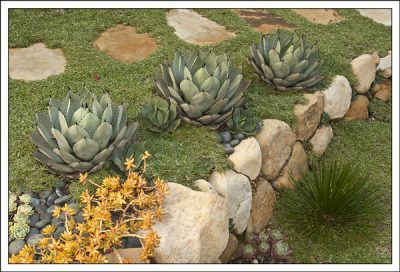
Plant of the Month: Dymondia margaretae “Silver Carpet”
A native of South Africa and a member of the Aster family, dymondia is a ground cover that makes a hardy, flat, very drought tolerant lawn replacement in dry areas. It can take heavy foot traffic and works well with stepping stones, flagstone and pavers. It has a deep root system thus making dymondia a good choice for soil retention.
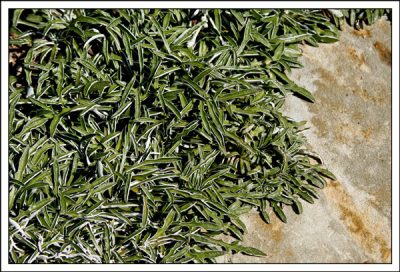
What’s Blooming Now: Verbena bonariensis
A member of the verbena family, V. bonariensis, a flowering annual that develops a square stemmed woody base with fragrant lavender to rose-purple clustered flowers on the terminal and axillary stems that bloom from mid-summer until fall frost. It can grow to 6 feet tall by 4 feet wide and is an attraction for butterflies.
A native to South America, It grows throughout Columbia, Brazil, Argentina and Chile and is well suited to Southern California.
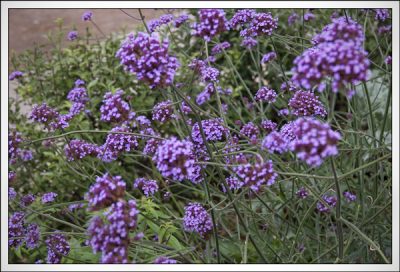
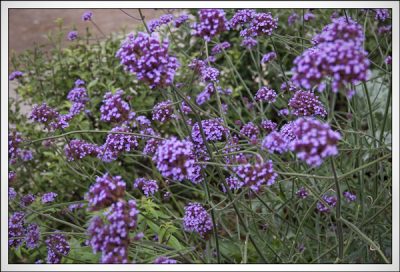
Navel Orange: The Dreaded Fruit Split
Ever wonder why navel oranges split? It occurs from September through November and often occurs in green fruit. It starts at the weakest point of the rind which is at the navel, or stylar. There is no chemical control for this physiological condition that is caused when water and sugar are transported from the roots of the tree to the ripening fruit and the rind is unable to expand under the pressure. Thicker skin varieties are less prone to the condition.
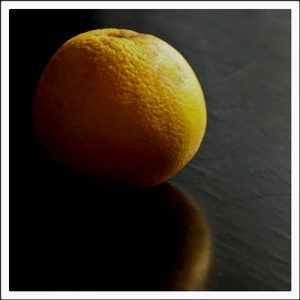
Something Stinks At UCSB: The Rare Corpse Flower “Titan Arum”
The Rare Corpse Flower, Amorphophallus titaum, finally bloomed to release a stink not unlike rotting flesh. This characteristic is usually avoided but this one attracted a flock of botanical lovers to the University of California at Santa Barbara, a visit that will linger in the olfactory memory banks of those, like Sarah who ventured to be within a nose of this very unusual plant. It was dubbed Titan Arum by Sir David Attenborough during the filming of his series titled, “Private Life of Plants”.
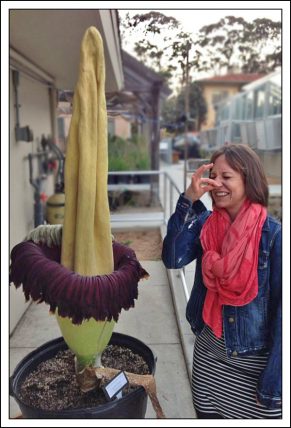
Remember El Nino and La Nina? Dry weather is on the horizon
The warm water temperature off Mexico are conducive for an active hurricane season punctuated by the one that hit the island of Hawaii a few weeks ago. Why does this matter to us in Santa Barbara? Well, it can mean wet or dry weather conditions for our region.
The Atlantic hurricane season is on track to be above normal in the wake of 2012 being recorded as on of the 10 warmest years on record globally. Arctic ice melt has been a center of attention as it corresponds with higher air carbon levels, sea levels rising indicating Earth is becoming a warmer planet.
The current El Nino pattern in the Pacific Ocean is neutral as it vacillates from a La Nina condition which brings our region dryer conditions.
This site, NOAA.gov, is a top priority for accurate weather reports and forecasts. Tune in to get up to date so that you can adjust your irrigation system accordingly.
As always, if you have any garden questions, please send me an e-mail.
Garden Tips:
- Clean and sharpen your tools
- Control mosquitoes with fish delivered by Vector Control of Santa Barbara or Mosquito Dunks in small water features – available in liquid or granules.
- Start an herb and vegetable garden this month
- Always clean shears and clippers with a bleach solution to avoid spreading disease
- Lawn mowers spread grasses and weeds from lawn to lawn
- Set gopher traps and tell the ground squirrels to go home!
- Conserve water by installing a thick layer of mulch and water in the morning
- Replace your lawn with less water demanding plants
- Check landscape lighting timers to adjust for shorter daylight hours
- Snail bait by Sluggo is pet friendly and will biodegrade

